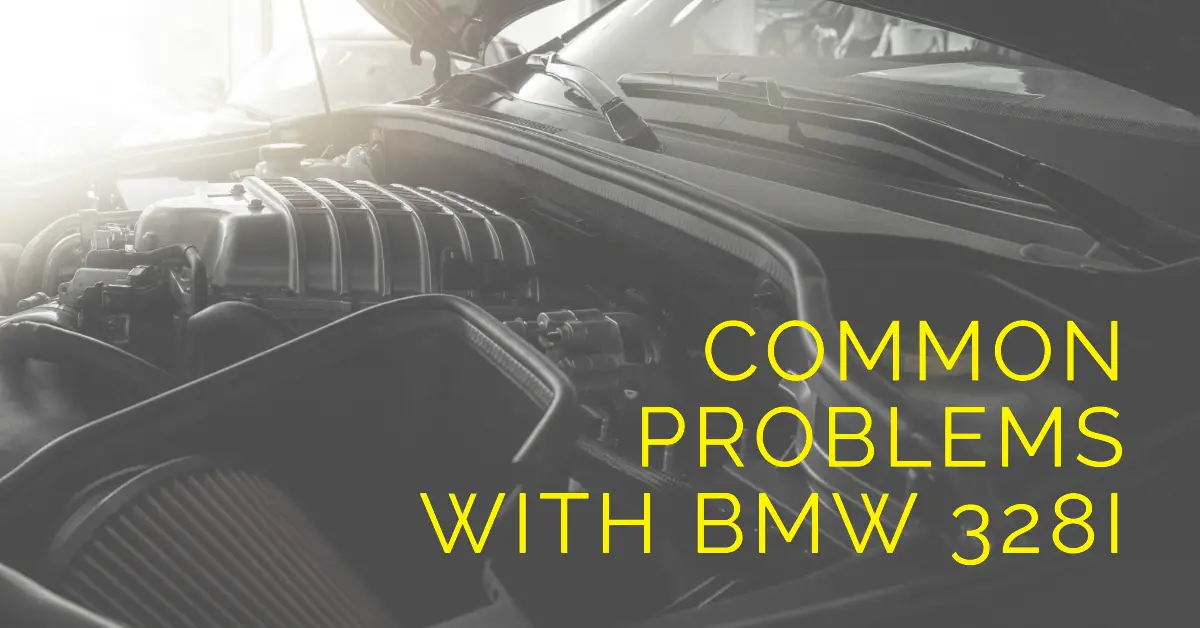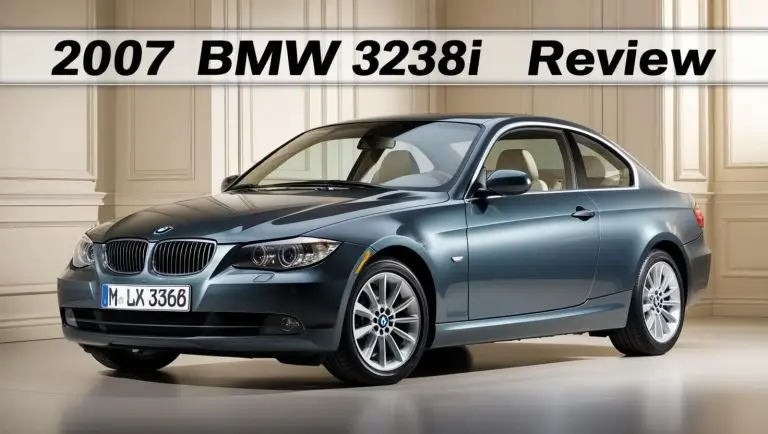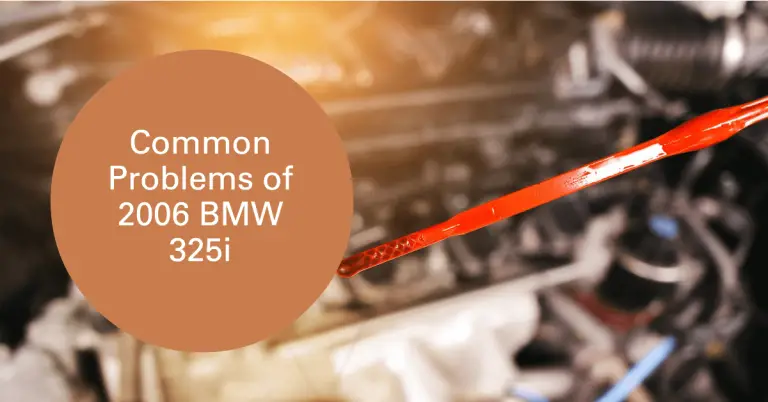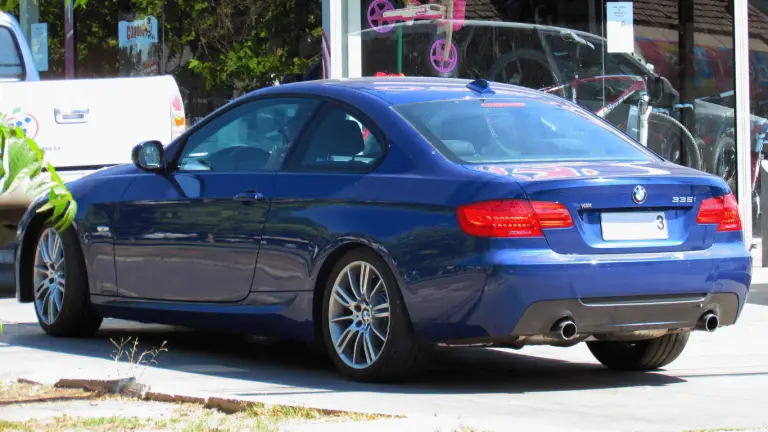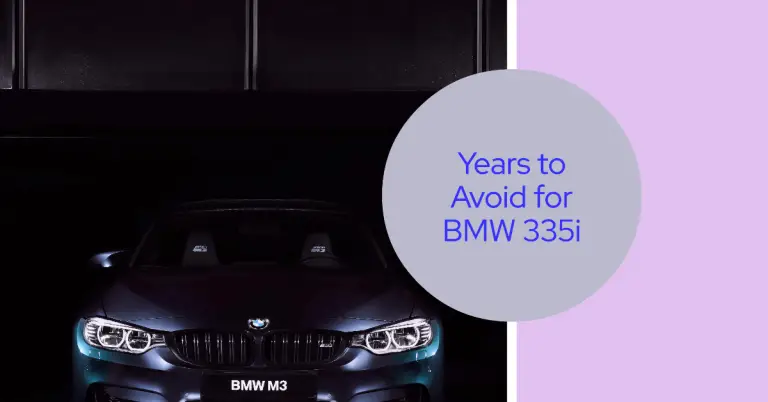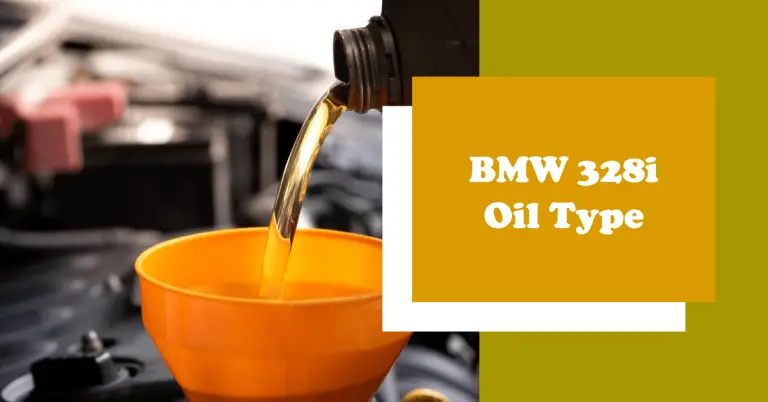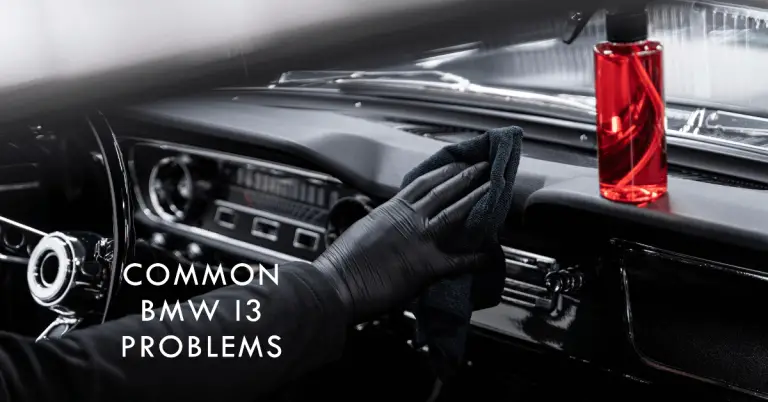2015 BMW 328i Problems: Common Issues and Solutions
The BMW 3 Series has long been renowned as one of the best compact luxury sedans on the market. The 2015 BMW 328i maintains this reputation with its elegant styling, refined interior, responsive handling, and peppy turbocharged engine. However, even well-engineered German vehicles develop their share of problems over time.
So what are the most common issues reported by 2015 328i owners and how difficult are they to diagnose and repair?
This in-depth article will cover the top 15 problems that crop up in the 2015 BMW 328i, dig into the root causes, and outline the best ways to get your 3 Series back in top shape. Whether you’re researching issues before a purchase or troubleshooting problems on your own 328i, understanding these trouble spots can save you money and headaches down the road.
We’ll explore common problems with the:
- Engine and drivetrain
- Electrical systems
- Suspension and steering
- HVAC and cooling system
- And more
Read on to get the full scoop!
Introduction to the 2015 BMW 328i
First, let’s briefly discuss the core features and specs of this popular 3 Series generation. The 2015 328i is the base rear-wheel drive model in the lineup powered by BMW’s ubiquitous 2.0L TwinPower turbocharged 4-cylinder engine.
It produces 240 horsepower and 255 lb-ft of torque, which provides spirited acceleration and passing power. An 8-speed automatic transmission with paddle shifters is standard, along with a sport-tuned suspension, power moonroof, leatherette upholstery, adaptive xenon headlights, and Dakota leather accents.
Available options like the M Sport package, adaptive suspension, navigation, premium Harman Kardon sound system, and advanced driver aids allow you to customize your 328i.
This generation saw minor styling revisions like LED accented headlights and upgraded interior technology and materials while carrying over the core mechanical components. As with any vehicle, areas that tend to fail include the engine, electronics, suspension, steering, and climate control systems.
1. Limp Mode Causes Poor Engine Performance
One of the most frustrating issues that can arise with a modern BMW is the dreaded limp mode. This restricts engine power, RPMs, and speed as a protective measure when the engine computer detects a problem. But what actually triggers limp mode on a 2015 328i?
The most common culprits are:
- Faulty crankshaft and camshaft position sensors
- Bad ignition coils or spark plugs
- Vacuum leaks
- Clogged or dirty fuel injectors
- Low fuel pressure
- Worn valvetrain components
Limp mode may come on gradually with declining performance and stumbling acceleration or suddenly leave you with very limited power.
To diagnose limp mode, first scan for check engine light codes which indicate the sensor or system fault. Potential solutions include:
- Replacing the crankshaft position sensor
- Replacing worn ignition components
- Checking for intake leaks and resealing gaskets
- Cleaning or replacing dirty fuel injectors
- Checking fuel pressure and pump function
- Adjusting valves if they are out of spec
This will typically restore normal engine performance and allow the 3 Series to exit limp mode. Be sure to test drive thoroughly after repairs to verify issues are resolved. Limp mode can protect your BMW engine from extensive damage if caught early.
2. Oil Leaks Create a Mess and Safety Hazard
Another very common problem on the 2015 BMW 328i is oil leaks from multiple points. The valve cover gasket, oil filter housing gasket, oil pan gasket, and engine oil cooler seals are all prone to fail over time.
Small leaks may only drip minimally onto the exhaust or undercarriage. But moderate leaks can billow smoke from burning oil and major leaks may suddenly drain oil, potentially causing engine damage if low oil pressure results.
Here are the typical leak locations and solutions:
- Valve cover gasket – This rudely leaks oil down the back of the engine and onto exhaust components. Resealing the gasket is an involved job requiring valve cover removal but stops the mess.
- Oil filter housing gasket – Located low on the engine, this gasket is notorious for leaks. The housing must be detached to reseal. Use a BMW branded housing and gasket.
- Oil pan gasket – A degraded rubber pan gasket allows oil to drip from the pan bolts and edges. Replacing the gasket requires unbolting the pan.
- Oil cooler line seals – Leaking seals here drip oil onto undercarriage components like sway bars. Resealing the cooler lines prevents this.
Try to identify the exact leak location right away. Then replace the faulty gaskets and seals with OEM BMW parts when possible for the best results. Proper repair procedures and torque specs must be followed. But this will return your 328i to leak free operation. Monitor oil level closely after repairs.
3. Battery and Starter Failure Cause No Start Conditions
The next issue we’ll explore is no start conditions – where you turn the key and your 328i does nothing or only clicks. Two of the most common causes are:
- A dead battery that lacks sufficient charge to engage the starter
- A faulty starter motor that fails to turn over the engine
Frequent short trips and extreme hot or cold weather accelerates battery and starter wear. High demand features like comfort access doors also tax the battery over time.
Troubleshooting tips include:
- Using a multimeter to test battery voltage – Should be 12+ volts when fully charged
- Checking battery posts for corrosion – Clean if needed
- Load testing battery to determine condition – Replace if weak or unable to hold charge
- Testing starter voltage at solenoid and mounting bolts – Little or no voltage indicates a bad starter
- Checking starter pinion gear operation – Should extend and spin freely
For preventative maintenance, upgrading to a higher CCA performance battery improves cold weather starting and reserves. The OEM AGM battery is also an enhancement. If the starter fails, go with a gear reduction unit for increased longevity and power.
4. Burning Oil Odor Signals Leak Issues
Detecting a burning oil smell from your BMW 328i is never a good sign. The most likely root cause is:
- Oil leaks dripping onto hot exhaust components and tailpipes
- Leaks near the turbocharger housing getting burnt up
Pinpointing the source involves a thorough visual inspection. Potential solutions are:
- Identifying external oil leaks and resealing gaskets
- Monitoring turbo oil feed lines and seals for cracks
- Repairing leaking valve cover gasket if dripping on exhaust manifold
- Checking for leaks near cylinder head and exhaust ports
This smell means oil is coating hot components. Repair leaks immediately before it leads to smoke, fire hazards or turbo damage. Monitor oil level closely as leaks deplete supply quickly. Burning oil warnings should not be ignored in your BMW.
5. Water Pump Failure Causes Overheating
Now let’s discuss issues with the cooling system – which is critical to maintaining proper engine temperature. The water pump circulates coolant through the block and radiator. Failures here can quickly lead to catastrophic overheating.
Common water pump problems include:
- Bearing wear allowing coolant to leak from the pump seal
- Cracks or failure of the plastic impeller blades
- Foreign debris buildup inside the pump housing
Warning signs of a bad water pump are:
- Coolant puddles under the car and low level in the reservoir
- High engine temperature readings accompanied by poor heater performance
- Visible coolant spray from the water pump area
Replacement pumps should be an updated plastic impeller version with improved durability. Many pumps fail before 60k miles so don’t ignore symptoms. Allowing the BMW engine to overheat risks head gasket failure and warped cylinders – which are very costly repairs.
6. Check Engine Light Indicates Faults
Modern vehicles have on-board diagnostics that monitor vehicle systems and illuminate the check engine light when trouble codes are set. This is your warning of issues.
Some common causes for check engine lights on the 328i are:
- Oxygen sensor failure triggering a P01## code
- Catalytic converter deterioration throwing a P04## code
- EVAP system leaks indicated by a P045## code
- Fuel trim and misfire codes signaling injector problems
It’s important to:
- Pull diagnostic codes right away to identify the source
- Inspect connections and test the affected components
- Replace faulty parts like sensors, catalytic converters, EVAP valves
- Clear codes and retest after repairs to confirm issues are fixed
Ignoring dash lights risks more serious failures. Code readers that plug into the OBD2 port provide the most detail on BMW fault codes. Read and address codes promptly to nip problems in the bud.
7. Electrical Gremlins Plague Systems
Electrical gremlins – or intermittently malfunctioning electronics – are never fun to track down. When vehicle systems seem possessed, it’s usually a fault in a control module or wiring harness.
Problems like:
- Windows and sunroof randomly opening or closing
- Radio/infotainment system resetting or freezing
- Climate controls behaving erratically
- BMW warning messages illuminating with no cause
Pinpointing the misbehaving module may require:
- Monitoring fault codes for module communication errors
- Checking fuses, relays, and harness connectors
- Wiggling wiring to isolate loose connections
- Process of elimination by unplugging modules until the culprit is found
Solutions can range from:
- Reseating connectors to clean contacts
- Splicing damaged wires in harnesses
- Reprogramming modules if corrupted
- Outright replacement of bad control modules
Be methodical when electrical issues arise. Don’t keep throwing parts at problems. Isolate the source and then repair to resolve annoying BMW electrical faults.
8. Thermostat Failure Hampers Cooling
The thermostat plays a crucial role in regulating engine operating temperature and heater performance. When it fails, symptoms include:
- High temperature gauge readings from lack of coolant flow
- Poor heater output with little warmth
- Visible coolant overflow from overheating
Root causes of thermostat failure are:
- Wear of internal components like the expansion valve and bi-metallic strip
- Debris, rust, and scale buildup on sealing surfaces
- Weakening of the spring which controls valve opening
Repairing involves:
- Draining some coolant to access the thermostat housing
- Removing old thermostat and cleaning housing surface
- Installing new BMW OEM thermostat with gasket
- Refilling and purging air from cooling system
Replace the thermostat promptly if you notice temperature or heater issues. And perform a full cooling system flush to aid longevity of the new unit. Thermostat repairs are quick and inexpensive but prevent major engine damage from overheating.
9. Worn Suspension Noises Indicate Problems
Let’s shift focus to the chassis and handling. As the BMW 328i suspension ages, common noises arise from worn components. These include clunks, squeaks, and knocking sounds from the wheels or undercarriage over bumps and while turning.
Some key sources are:
- Control arm bushings – Worn rubber or cracking allows movement of the control arm. Replacing bushings will eliminate clunking over bumps.
- Wheel bearings – Grinding, rubbing noise from excessive bearing clearances. New sealed bearing assemblies are required.
- Strut mounts – Worn mounts cause knocks as the strut piston impacts the mount. Strut replacement resolves this.
- CV joints – Clicking or popping on turns signals worn joints. Boot tears can lead to failure.
Have an assistant listen from outside the car as you turn the wheel to isolate the corner making noise. Then inspect components in that area. Early replacement of worn parts reduces damage to hubs and mounts. This will smooth out your BMW’s ride.
10. Transmission Shifting Problems
Now let’s go over troubleshooting automatic transmission issues. Harsh shift quality, slippage, and abnormal behaviors point to problems with the ZF 8HP gearbox.
Potential causes include:
- Low transmission fluid level allowing clutch slippage
- Plugged filter or pan strainer reducing pressure
- Worn clutch plates and bands from high mileage
- Leaking seals and gaskets allowing fluid loss
- Solenoid failures altering normal shift timing
Diagnosing the root problem involves:
- Checking transmission fluid level and condition first
- Scanning for any transmission related fault codes
- Inspecting fluid for metal debris indicating internal wear
- Pressure testing to identify leaks
- Determining if shifts vary with fluid temperature
Remedies can range from:
- Adjusting shift firmness adaptively through hidden menus
- Flushing old fluid and filters to restore pressure
- Replacing worn clutches and seals
- Repairing fluid leaks and refilling properly
Don’t just cover up shifting problems with flushes. Determine the cause and repair it or transmission damage will compound. Harsh shifts point to underlying issues.
11. Air Conditioning System Failures
In warm weather areas, a functional air conditioning system is a must. The A/C cools the 328i cabin using a refrigerant gas cycle not unlike your home refrigerator.
Common causes of warm air from the vents include:
- Refrigerant leaks leading to low system pressure
- Compressor clutch failure stopping refrigerant flow
- Clogged condenser restricting airflow
- Blower motor failure preventing air circulation
- Expansion valve blockage reducing cooling
Pinpointing the issue may require:
- Inspecting A/C components and lines for visible leaks
- Pressure testing the system to identify low refrigerant or pressure
- Checking compressor engagement when A/C is turned on
- Confirming condenser fan operation and airflow
- Electrical diagnosis of blower motor power and ground
Repairs involve:
- Finding and sealing any refrigerant leaks
- Replacing bad compressors or clutch coils
- Cleaning debris from the condenser fins
- Installing any faulty electrical components
Then properly recharge the R134a system with the specified amount of refrigerant. Don’t keep topping it up without fixing leaks. A fully operational AC keeps the interior, engine, and transmission cool.
12. Timing Chain Noises Call for Replacement
The timing chain on the BMW N20 engine is prone to premature stretching and wear. This causes a distinct rattling sound at cold startup as slack in the chain slaps around.
Typical timing chain noise arises from:
- Stretching of the chain links over tension sides
- Excess slack between crankshaft and camshaft gears
- Wear of the timing chain guides
Replacement involves:
- Removing oil pan and front cover to access chain
- Extracting the crank and cam gears to remove chain
- Installing updated chain, guides, gasket, and tensioner
This is engine-out repair work best left to experienced BMW techs. Some opt for rebuilt engines to receive new updated timing components. Repair sooner than later, as stretched chains increase risk of jumping timing and major engine damage.
13. Turbocharger Failure Causes Power Loss
Turbochargers use exhaust gases to provide boost – increasing torque and power density. But being exposed to extreme heat and pressures makes them prone to eventual failure.
Turbo issues can result in:
- Significant loss of acceleration and power
- Check engine light with P02## and P03## codes
- Visible blue or white smoke from the exhaust
- Oil leaks around turbo seals
The BorgWarner twin-scroll turbo tends to face issues like:
- Compressor wheel seizure due to lack of oil
- Burned turbine housing causing performance decline
- Exhaust side oil leaks
- Shaft play loosening impellers
Repairing a bad turbo means installation of a new factory unit or reputable aftermarket equivalent. Ensure oil and coolant lines are free of debris when installing the replacement. Only quality turbochargers preserve the 328i’s performance and prevent premature failures.
14. Fuel Injector Problems Cause Poor Running
To deliver the proper air/fuel mixture, the engine relies on precise injector spraying. Contaminated or clogged injectors will cause all sorts of driveability and performance issues.
Symptoms of dirty injectors include:
- Long cranking time to start the car
- A rough idle with occasional misfires
- Hesitation, jerking, or lack of power under acceleration
- Fuel trim and cylinder misfire codes
Cleaning dirty injectors should be left to shops with proper equipment. DIY ultrasonic or chemical bath techniques often fail to remove deposits.
New injectors must match the original flow rate spec. Get the injectors programmed by BMW to avoid lean codes. Properly functioning injectors are vital for engine operation, gas mileage, emissions, and power delivery. Don’t neglect their maintenance.
15. Rear Main Seal Leak Indicates Big Repairs
While oil leaks in general are common on the N20 motor, a rear main seal leak is more involved to repair. The rear main seal is positioned at the back of the crankshaft, under the transmission bell housing.
Identifying a rear main leak involves:
- Monitoring the starter and flywheel area for seepage
- Tracing the source since valve covers often leak onto the transmission
- Removing starter for closer inspection
- Checking for leaks during a transmission service
To replace the seal requires:
- Transmission removal for access
- Detaching the old seal and applying a new unit with sealant
- Resealing the new transmission before reinstallation
Conclusion
This covers the most common issues, symptoms, causes, and fixes for problems that arise in the 2015 BMW 328i. Regular maintenance and prompt diagnosis of issues is the best way to nip problems in the bud before they spiral into major repairs.
While even well-built BMWs eventually face some failures, understanding what tends to go wrong with these cars allows you to make more informed purchase and ownership decisions. Look for updated parts, proper repairs, and service records if purchasing used.
Following the factory maintenance schedule, checking for leaks, listening for odd noises, and addressing dashboard warning lights right away will help this 3 Series last many more enjoyable miles. With proper care and nuturing, a 2015 328i can deliver years of spirited driving and fun behind the wheel.
Hopefully this overview better prepares you to handle the most likely issues that may arise during your BMW ownership. Let us know if you have any other questions!

